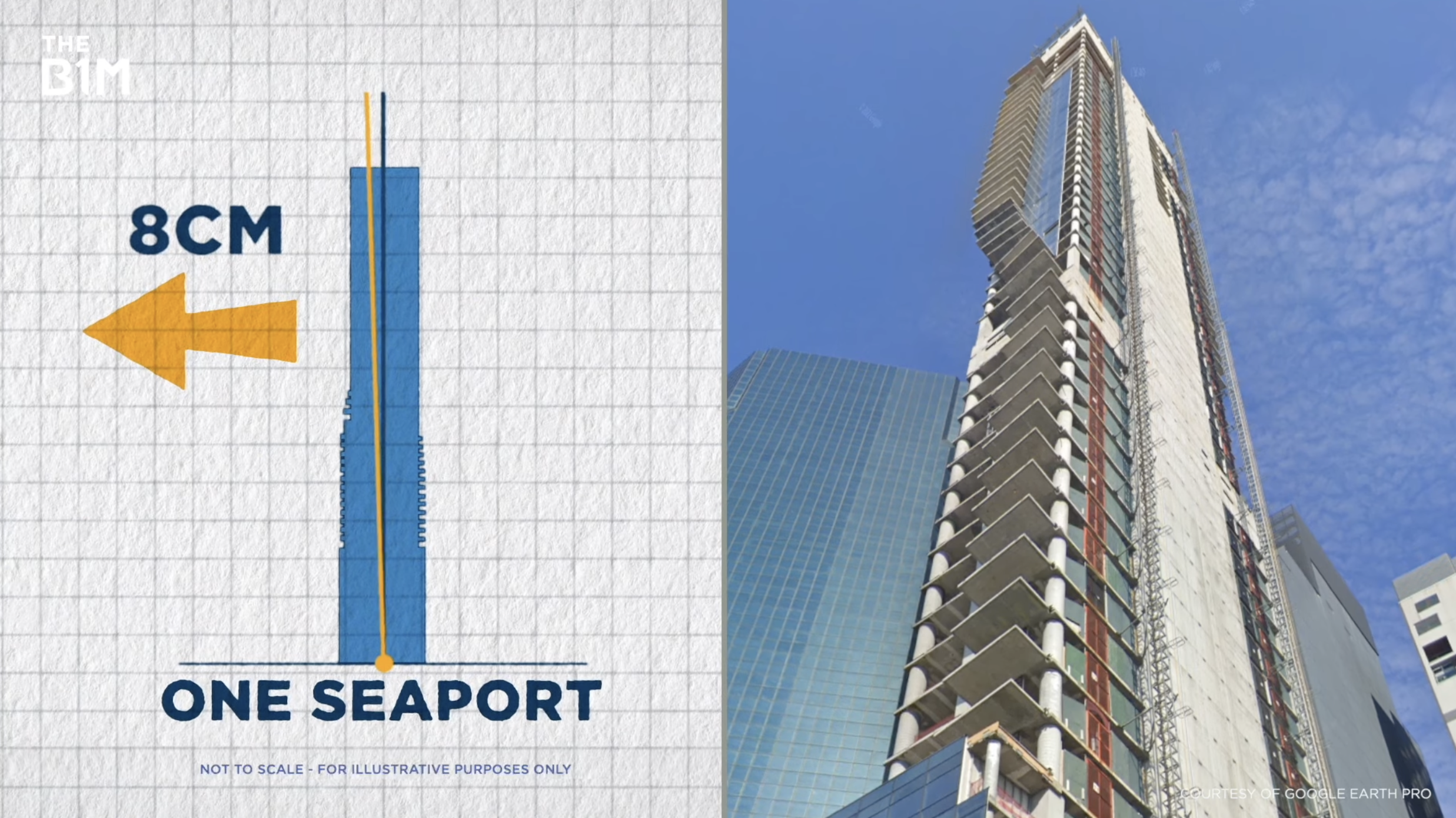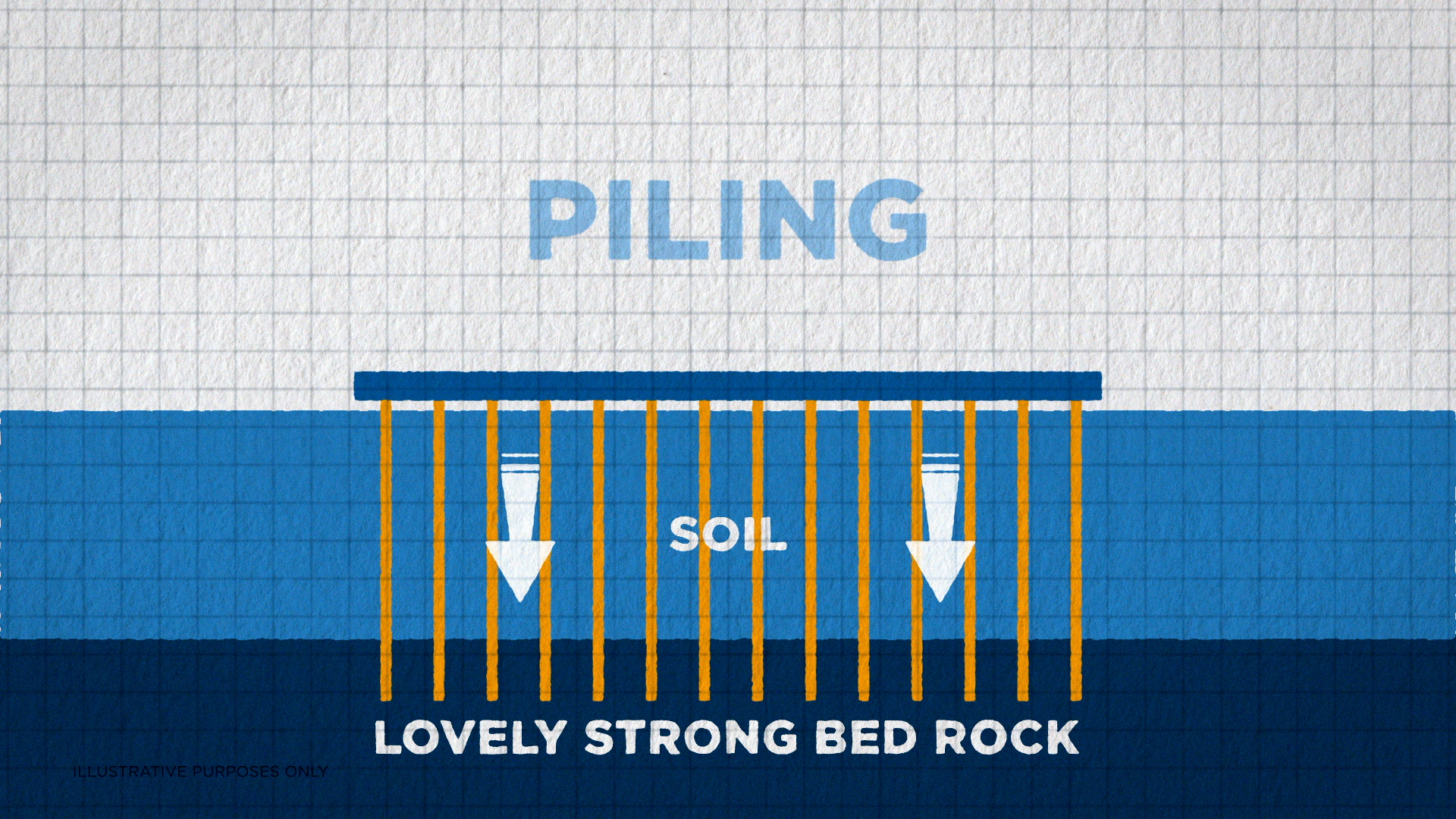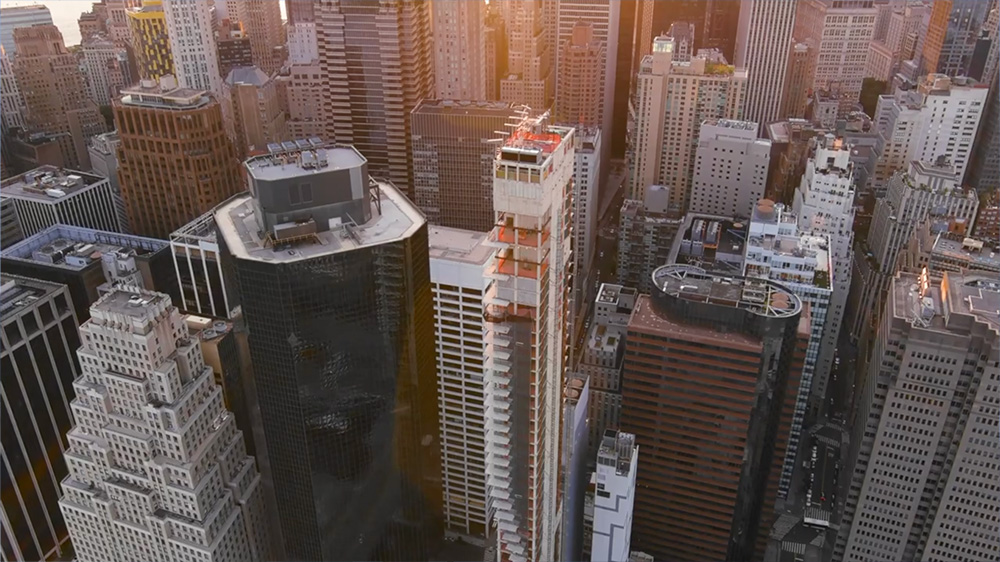The Leaning Tower of New York City
- Youtube Views 2,118,140 VIDEO VIEWS
Video hosted by Fred Mills. This video contains paid promotion for Masterworks.
THERE'S a big problem in The Big Apple.
You’ve heard of Italy’s Leaning Tower of Pisa and you can’t forget San Francisco’s tilting Millennium Tower. But did you know that New York City also has its very own slanted skyscraper?
That’s right, the skyline that never stops evolving has developed a bit of a predicament.
It's all happening over at One Seaport or 161 Maiden Lane: 60 storeys of prime real estate on Manhattan’s eastern waterfront. At first glance it may look like any other construction project downtown. But look a lot closer, and you’ll find it’s actually leaning 8 centimetres, or three inches, to the north.
Now that might not seem like a lot, but it’s enough to leave a brand new skyscraper abandoned before it’s even opened. Construction is in a stalemate and no one wants to admit fault.
"It was supposed to have beautiful south and east facing views, and it's turned into one of those symbols of like what can go wrong in a project," SVP of content at The Real Deal, Hiten Samtani said.
With a busy highway on one side, a city packed full of high-rises and busy New Yorkers on the other, intense media scrutiny and millions of dollars in real estate deals at stake, the pressure is on to fix the tower before it’s too late.

Above: Lower Manhattan's 161 Maiden Lane has developed an 8cm lean. Image [left] produced by The B1M. Not to scale and simplified for illustrative purposes only. Image [right] courtesy of Google Earth Pro.
It’s no secret that New York City’s real estate is both expensive and competitive. When it’s park side or waterfront - the price tags, and prestige, get even higher.
161 Maiden Lane was going to be no exception. Overlooking the East River in downtown Manhattan – the 204-metre tower was set to be the tallest residential skyscraper on the eastern waterfront with apartment sales range from $1M to $7M.
But after several construction delays and accidents, it’s safe to say that the skyscraper has had a string of bad luck.
Today, construction is stalled and the building only has about half of its windows and finishings, so it’s a bit of a blemish on the New York skyline.

Above: The project's location in Lower Manhattan.
There have been issues throughout its entire development, but it’s the allegations around the most important step of construction that are generating the most interest: the building’s foundation.
Now for any non-engineers out there, that’s the part of a skyscraper that sits at and below ground level, and provides a firm base for it to rise on. Essentially before you build up, you have got to build down. But assembling a skyscraper in New York City is unlike anywhere else.
"Because you're you're developing in such a hyper dense environment, there are certain constraints you have that you wouldn't have in, let's say, Dallas, where you have a lot of land to play with. Here you're building, it's all vertical engineering," Samtani said.
Engineering 101
Now to really understand the allegations around this building’s foundations we need to get you up to speed on a few things – so buckle-up for another little round of Engineering 101 with The B1M.
Foundations are complicated and we’re going to massively simplify here. Please don’t go building your own foundations off the back of this lesson.
The basic job of a foundation is to provide a firm base for a building to stand on and to transfer the vertical weight or load of that building down onto planet Earth.
Sometimes that can be done onto great, strong rock or soil at ground level. Sometimes you have to go a little deeper. And sometimes you have to go very deep indeed. Every construction site in the world is unique, so things vary.
Small buildings like homes might use block or strip footings – that’s basically just shallow cubes of strips of concrete – with a slab on top.
Other small structures may use raft foundations, and very big buildings often use a form of piling: that’s where steel-reinforced concrete columns are driven or poured into the ground to reach good material or bedrock deep below, transferring the weight of the building down.
Sometimes that’s done with a basement where the piles are used to form the walls. Sometimes there are piles that go beyond a basement, sometimes there are pools or whole subway stations down there, but you get the idea. Like we said, not easy.

Above: Many large buildings are constructed on pile foundations. Image produced by The B1M and simplified for illustrative purposes only.
Now in major cities with lots of tall buildings around – kind of like New York – you can’t just go digging a hole wherever you like.
With all those heavy buildings putting pressure on the ground any excavation would take away some of the earth their weight is resting on; it would interrupt their so-called angle of incidence. To avoid the risk of buildings collapsing teams digging basements need to create retaining walls first.
That can be done by driving sheets of steel into the ground or creating a wall of piles first, then excavating, bracing the open hole as you go.
Now we could bore you with a bit of top-down basement construction but we’ve done that before and it’s not really relevant.
The main thing to take away from all of this as you’ve hopefully gathered is that foundation engineering is governed by one very important material: soil.
"Soil has a bearing capacity, that is referring to how much poundage a foundation can handle," assistant professor of Civil and Environmental Engineering Saeed Janbaz said.
"Then the engineer that has designed a building is considering the weight of the building, is considering the weight of the furniture and weight of the people, weight of the glass. Also weird forces like wind force."
If a soil is too weak or not up to standard, it can be treated to improve its strength sometimes by adding chemicals or by mixing in other material. But the more common approach is just to go for the more expensive but often much more reliable piles.
The Ongoing Lawsuit
At 161 Maiden Lane, Pizzarotti, the building's contractor, sued the developer, Fortis Property Group, saying it cut corners.
According to the lawsuit, they took the soil improvement route, rather than the piling route like many other nearby buildings. Pizzarotti claims details of the method used were not revealed to it before it started building the tower.
As construction continued, this allegedly made the building improperly settle and caused it to tilt roughly 8 centimetres.

Above: Although it's difficult to discern, 161 Maiden Lane is leaning about 8cm towards the north. Image courtesy The Dronalist.
There’s been a lot of legal drama over who is ultimately to blame, and the case is still being battled out in the courtroom.
Pizzarotti claims the building will continue to lean if the foundation isn’t fixed, which could create a risk of falling facade panels, corrosion, or even elevators failing to remain vertical.
As a result, the company claims it terminated its contract with Fortis.
Fortis acknowledged the building had an ‘alignment issue’, but said it wasn’t a cause for safety concerns. The company also said Pizzarotti never actually terminated its contract and instead continued working.
The B1M reached out to both parties for comment on all this but didn’t receive a response.
Potential Solutions
"If the lean was caused by a force that came from the wind, it was acting on a skeleton, empty, and it was able to push it that way," Janbaz said.
"You put glass on that? You have a ship sail. More force from that wind, and it will move further. And if you have something broken, especially in the case of concrete, [if] concrete breaks, it's done."
This could explain why there were reports that some of the glass facade had appeared to be removed in 2020.
While that could be a temporary fix, a long term plan still hasn’t been laid out largely because the case is still being fought-out in court.
"The leaning of the building is a symptom of the problem," Janbaz said.
"If you don't know the problem, you cannot give a remedy for it. If the problem is a broken foundation, you're done. You have to dismantle every fixed about foundation and go for it. If the problem could be something much simpler, that maybe the foundation has no issues."
Over in San Francisco, engineers have proposed fixing Millennium Tower’s lean with underpinning; installing 18 new piles into the building’s foundation deep underground. Now underpinning is a very common procedure – especially on domestic properties – but it’s extremely challenging on a skyscraper.
Above: San Francisco's Millennium Tower is also experiencing issues with leaning and engineers have proposed underpinning.
Fortis claims all it would take to fix 161 Maiden Lane is a simple redesign of the glass facade, but until we know the root of the problem we won’t really be able to work out the best way to fix it.
To be very clear, no one is claiming that the building is on the verge of collapsing right now and it’s understood to be in a safe condition.
But the longer it sits abandoned, the more expensive it gets – and nobody wants to foot that bill. According to The Real Deal, nearly all prospective buyers have pulled out of their deals. And hundreds of millions of dollars have already been sunk into the construction work.
It remains to be seen if this leaning tower can ever stand straight again. In the meantime it sits unfinished on the city’s skyline.
For all of the drama of this building, countless other projects around the world proceed without any issues everyday. It’s a powerful reminder of just how important the construction industry’s work really is, and how billions of us take it for granted.
This video contains paid promotion for Masterworks. Video presented and narrated by Fred Mills.
Special thanks to Hiten Samtani, Saeed Janbaz and The Dronalist. Additional video footage and images courtesy of The Dronalist, Google Earth, Yahoo News, Bloomberg Quicktake and Christine Beldon.
We welcome you sharing our content to inspire others, but please be nice and play by our rules.








